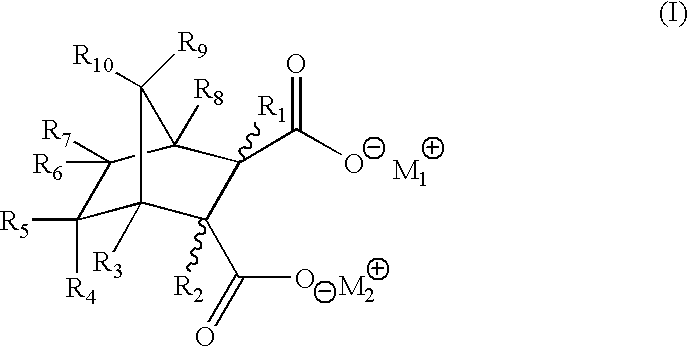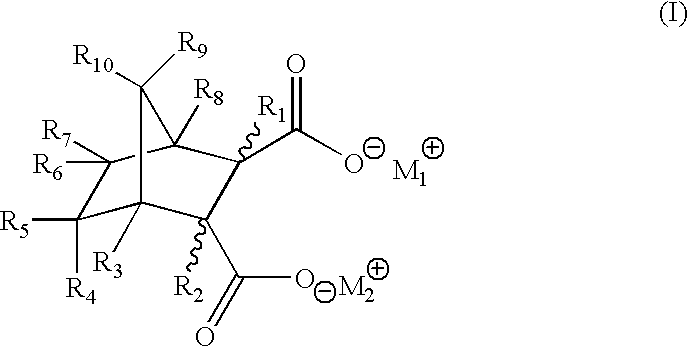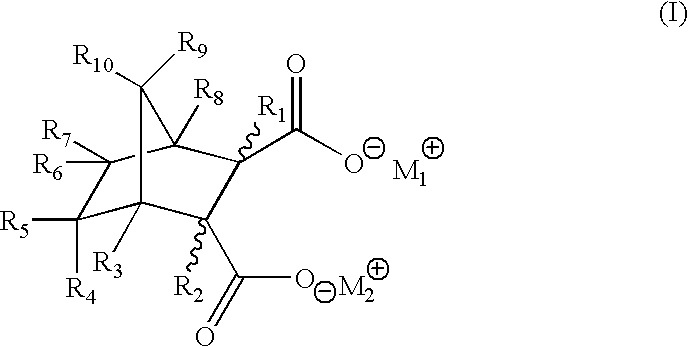Novel highly versatile thermoplastic nucleators
a thermoplastic nucleator, highly versatile technology, applied in the preparation of organic compounds, chemistry apparatus and processes, organic chemistry, etc., can solve the problems of high fugitivity, poor thermal stability of camphanic acid, and its own drawbacks for large-scale industrial applications, and achieve excellent high peak crystallization temperatures, excellent thermal stability, and low fugitivity
- Summary
- Abstract
- Description
- Claims
- Application Information
AI Technical Summary
Benefits of technology
Problems solved by technology
Method used
Image
Examples
example a
Disodium bicyclo[2.2.1]heptane-2,3-dicarboxylate
[0040] To a solution of disodium bicyclo[2.2.1]hept-5-ene-2,3-dicarboxylat-e (10.0 g, from example 3) in water (100 g) was added 0.5 g palladium on activated carbon (5 wt %). The mixture was transferred into a Parr reactor and was subjected to hydrogenation (50 psi, room temperature) for 8 hours. The activated carbon was filtered out. Water is removed in vacuo at 75.degree. C. The resulting product was dried and milled (m.p >300.degree. C.).
example 2
Calcium bicyclo[2.2.1]heptane-2,3-dicarboxylate
[0041] To a solution of disodium bicyclo[2.2.1]heptane-2,3-dicarboxylate (22.6 g, 0.1 mol) in water (150 g) was added a solution of calcium chloride dihydrate (14.7 g, 0.1 mol) in water (100 g). The mixture stirred at 60.degree. C. for 2 hours. The resulting white precipitate was filtered. The white powdery product was dried and milled (m.p. >300.degree. C.).
PUM
| Property | Measurement | Unit |
|---|---|---|
| flexural modulus | aaaaa | aaaaa |
| flexural modulus | aaaaa | aaaaa |
| elongation | aaaaa | aaaaa |
Abstract
Description
Claims
Application Information
 Login to View More
Login to View More - R&D
- Intellectual Property
- Life Sciences
- Materials
- Tech Scout
- Unparalleled Data Quality
- Higher Quality Content
- 60% Fewer Hallucinations
Browse by: Latest US Patents, China's latest patents, Technical Efficacy Thesaurus, Application Domain, Technology Topic, Popular Technical Reports.
© 2025 PatSnap. All rights reserved.Legal|Privacy policy|Modern Slavery Act Transparency Statement|Sitemap|About US| Contact US: help@patsnap.com



